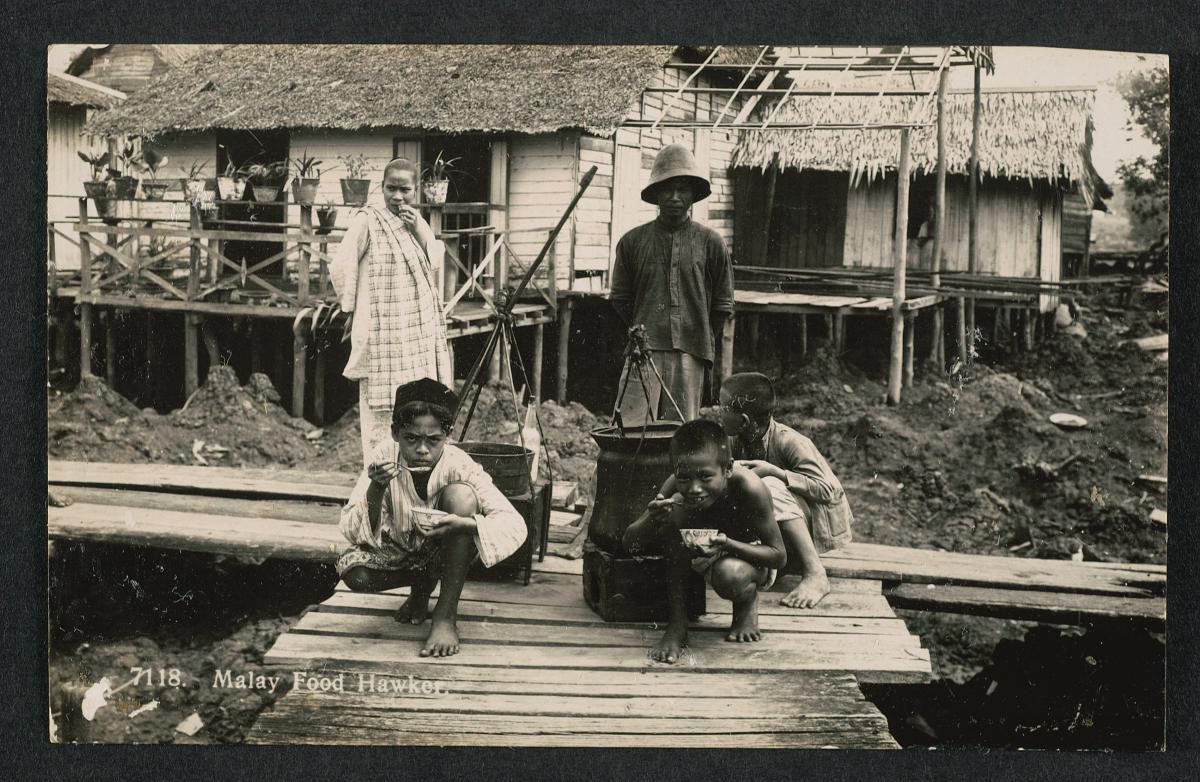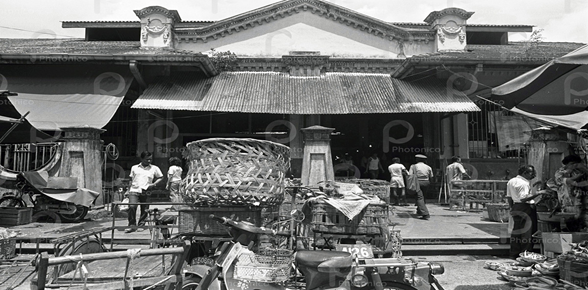Singapore Kampong Food 1940
With many delicious food and interesting places making Hougang be. Kampong Glam got its name from the Malay word gelam cajeput tree which grew locally and has many uses.

Postcard Showing Children Eating Hawker Fare In A Kampong
The Beauty Of Singapores Peranakan Shophouses.

Singapore kampong food 1940. Sabar Menanti means wait patiently in Malay an apt name for this eatery on account of the long queue to get to the food. The rapid urbanisation of Singapore in the past four decades has seen hundreds of villages demolished and the lands freed up for redevelopment. With its exposed electrical lines and 4-digit postal code street signs its obvious that this kampong is as old as many of our boomer parents.
364 out of 365 days an optimist it is easy to keep her happy aesthetic visuals her dog and good food. This is a village that has been around since 1956. Mainland Singapores last kampong.
The last surviving village in mainland Singapore Kampong Lorong Buangkok is located right smack in the middle of modern developments. Medic Will Brand who worked in the Alexandra Military Hospital in the early 1940s recalled the existence of rubber coconut and papaya plantations in the area as well as kampong predominantly occupied by Chinese families but with some Malays and Indians. Feast on a spread of dishes such as Sundanese grilled chicken and tahu telur fried tofu eggs and vegetables topped with prawn paste sauce.
Will it remain there forever. 18th July 2019 by Verne Maree 8 Min Read. Kampong Glam Walking Tour.
Today we visited another Singapore mature estate which is Hougang. Take a stroll through the neighbourhood and youll find traditional shops hawking carpets perfumes and nonya kebayas Peranakan-style blouse and dress just a stones throw away from cool cafés and old-school eats. It is here that you will view in awe a row of beautifully conserved pre-war shophouses all ornately decorated with features like.
We had two variations of the breakfast one from Ya Kun Kaya Toast seen on the left a Singaporean breakfast institution since the 1940s and another from Koufu Food Court. It has been referred to in various food publications as Singapores national seafood dish or even Singapores. The rhythm of hawkers movements structured the routines and cycles of social life of the consumers.
30 A former Alexandra resident Tan Kim Ock remembered many attap houses in the area during the 1930s. Has been around since the 1940s before making its way to Singapore in 2016. The area beyond Kampong Glam Conservation District today north of Jalan Sultan up to Crawford Street is a virtually forgotten area when most people think of historic districts in Singapore.
In fact this area played a very important role in the Malayo-Muslim urban community in Singapore. The greatest transshipment centre in the East 1938 a waterfront drive comparable to any similar thoroughfare in Europe 1938 an aerodrome unrivalled in the Orient 1938. The neighbourhood used to be known as Kampong Silat with its.
Kampong food in Hougang. Discover Kampong Glams rich history and heritage bustling streets shops eateries and key landmarks on this walking trail. Established in the 1940s the family-run business has since expanded to several branches which include Sabar Menanti Restaurant.
A stroll along Kandahar Street in the historical precinct of Kampong Gelam is most reminiscent of Singapore in the 18th century. The flats located at Silat Avenue were mostly built between 1949 and 1952 by the Singapore Improvement Trust SIT the predecessor of the Housing Development Board HDB making them the second oldest surviving public housing estate in Singapore after the Tiong Bahru pre-war flats. Coffee connoisseurs will love the selection of quality brews in the area.
Singapores tourism documentaries 1930s and 1950s. Having grown up here in the 1950s this redoubtable woman is herself a window to a bygone era and her home a reflection of a more gracious time. Samantha HuiQi Yow Rustic idyll isnt what usually comes to mind when most.
The life of many Singaporeans of the last generation changed dramatically as they shifted from their kampong to the high-rise public flats. And finally renamed as Tekka. The South Indians referred to it as Mattu Kampong Pasar.
Houses are made from wood and zinc. While the egg tarts may steal the show their curry fish balls. With so much of Singapores iconic and historical buildings slipping away were still heartbroken about the fate of Rochor and Pearl Bank were taking a moment to shine the light on various heritage.
The classic Singapore breakfast consists of kaya toast with tea and soft-boiled eggs. The charm of Kampong Gelam lies in its diverse mix of the old and new. Singapore before 1959 series Part 11.
The days of living in dilapidated wooden attap houses with. Plant mom occasional museum-hopper and roommate to a derpy maltipoo called Mocha Wan Lin is a believer of lets worry about it when it happens. Participant 015 51- to 60-year-old Chinese male interviewed in Mandarin fondly remembers such peddlers selling yong tau foo in the kampong when he was 10 years old.
Photos and memories from 1950s Singapore. Kampong Glam originally spelt Campong Gelam when it was named around 1830 is one of 10 subzones of the Rochor area located in the central region. Nestled among Singapores modern urban sprawl Kampong Lorong Buangkok is the city-states last rural village Credit.
The siput sedut sea snails in coconut milk gravy. 1940 July 12 Singapore was a municipal. Kampong Glam welcomes a new boutique capsule hotel.
After its first renovation it was renamed Buffalo Road Market and Cook Food Centre. 697-699 North Bridge Road Singapore 198675. Known among Malays as Kandang Kerbau Market the Chinese called it Tek Kah.
Its apt that Mimi Somjee named her furniture business Window to the Past now WTP The Furniture Company. Its bark can be used for weaving and to caulk. By Imran bin Tajudeen.
If you walk along the streets of. A food peddler in the kampong circa 1980. Following which it became Zhujiao Centre to accommodate the national Speak Mandarin Campaign in 1981.

Living Conditions In The Rural Areas Kuala Lumpur Travel Singapore Photos Village Photography
Komentar
Posting Komentar